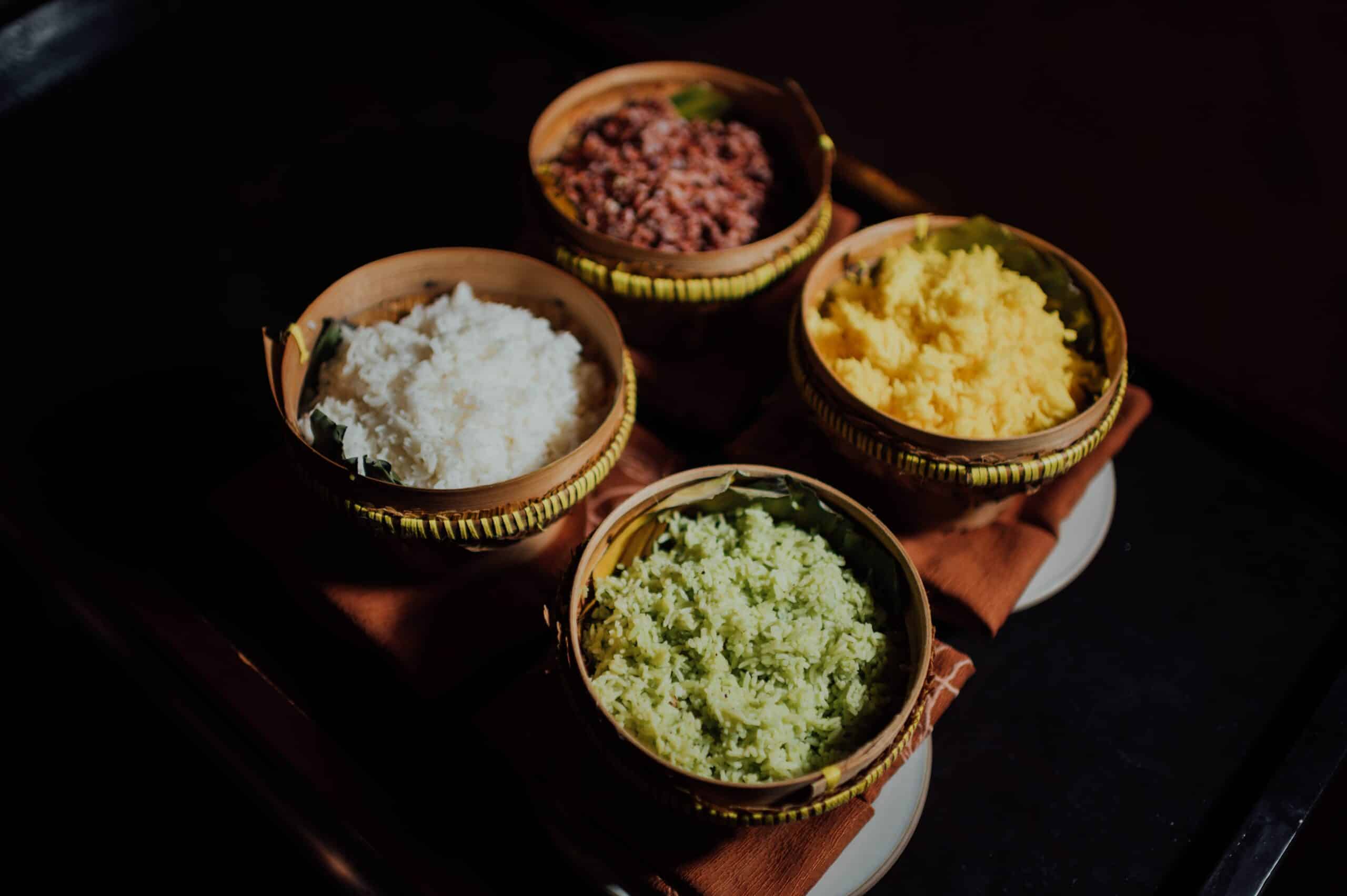When it comes to growing and caring for a unique tree, the curry tree is second to none. This extraordinary tropical evergreen has been around for centuries, but its popularity has surged in recent years as more gardeners are looking to add a touch of the exotic to their gardens. From its fragrant foliage to its tasty fruits, this tree offers a plethora of benefits that will make it a welcome addition to any yard. As the saying goes, “A little knowledge is a dangerous thing” – but with the right information and some patience, anyone can get great results from growing and caring for curry trees.
Curry trees (Murraya koenigii) are native to India and Sri Lanka where they have been cultivated since ancient times for their medicinal properties and culinary uses. The aromatic leaves are used in many curries throughout South Asia and are believed to have health-promoting benefits such as aiding digestion and reducing inflammation. Even if you don’t plan on using the leaves in your cooking, simply having one of these plants in your yard can bring joy – they’re easy to care for, drought tolerant once established, and rarely affected by pests or diseases.
Whether you’re an experienced gardener or just getting started, nurturing a curry tree doesn’t have to be intimidating. In this article we’ll cover everything you need to know about how to grow and care for these beautiful plants – from choosing the right location through harvesting delicious fruits ripe for eating or cooking into spicy dishes. So let’s dive in!
What Is A Curry Tree?
A curry tree is truly a miracle of nature! Not only does this evergreen produce leaves with a tantalizing flavor and aroma, it is also an eye-catching addition to any garden. With its glossy deep green leaves, delicate white flowers, and sweet-smelling fruits, the curry tree is sure to captivate anyone who encounters it.
Caring for a curry tree doesn’t have to be complicated or time consuming. It’s easy to maintain with just a few basic steps. The curry tree prefers full sun and well-drained soil, so make sure to plant it in an area that receives plenty of sunlight and has good drainage. Watering should be done regularly but don’t overwater; this could lead to root rot. Fertilize every two weeks in spring and summer for optimal growth – a balanced fertilizer will do the trick. Prune the branches as needed since pruning encourages new leaf growth and helps keep the shape of the tree intact.
When given proper care, the curry tree can thrive in almost any climate. Its long-lasting beauty and unique flavor will bring joy to your garden for years to come! With just a bit of extra attention, you can enjoy all the benefits this amazing plant has to offer.
Where Does The Curry Tree Grow Best?
The curry tree (Murraya koenigii) boasts a flavor profile like no other, making it a prized addition to any garden. But can the average gardener successfully cultivate and care for this unique tree? To answer this question, let us explore where the curry tree grows best.
The curry tree is native to South Asia and is found in India and Sri Lanka. It thrives in warm climates with temperatures ranging from 68-77°F and prefers humidity of 60% or higher. This means that those living in a Mediterranean climate are likely able to grow the curry tree outdoors year-round – but only if they meet its other growing requirements.
It’s important to bear in mind that the curry tree does not tolerate cold temperatures well, so if you live in a colder climate, you will need to grow your plant indoors and mimic its preferred conditions. Additionally, it requires at least five hours of direct sunlight each day with some partial shade during the hottest part of the day—ideally around noon. The soil should be kept moist but never soggy; good drainage is essential for optimal growth. With these considerations taken into account, even novice gardeners should find success in cultivating their own curry trees!
Obtaining A Curry Tree
Obtaining a curry tree is like finding a treasure in the garden. It can be done by visiting a nursery, ordering online, or asking friends and family. Here are three tips to help you get your hands on one:
Ask around – Ask friends and family if they have a curry tree they’d like to give or sell you. You may even find someone who has an extra plant they don’t need.
Visit local nurseries – Check with your local nurseries to see if they carry curry trees for sale. Make sure to ask about the variety of curry tree available as some will do better in certain climates than others.
Order online – There are many online nurseries that sell curry trees, so do some research and find one that offers the best price and quality of plants.
As a specialist in botany and gardening, it is important that you get the right variety of tree for your climate and soil conditions so it thrives for years to come. Make sure to ask the seller questions about how best to care for the plant, such as its recommended sun exposure, watering needs, and fertilizing schedule. With proper care, your curry tree will produce fragrant leaves year-round!
Now that you know how to obtain a curry tree, let’s look into planting and caring for it properly so it can reach its full potential.
Planting And Caring For Curry Trees
Curry trees are a beautiful addition to any garden, and with the right care, they can thrive for years. Planting and caring for curry trees is a rewarding experience that will bring joy and beauty to your landscape. To help your curry tree grow to its fullest potential, here are some tips on planting and caring for them.
First off, choose an area in full sun or partial shade with well-draining soil. Dig a hole as deep as the root ball of the tree, and backfill it with soil mixed with compost. Water the soil thoroughly before planting. Place the tree in the center of the hole and fill in around it with more soil-compost mixture. Once planted, add mulch around the base of the tree to help retain moisture in dry weather.
It’s important to water your curry tree regularly, especially during warm months when high temperatures can quickly dry out soil. For established trees, check for dryness two inches down into the soil – if it’s dry, give it a good soaking until water runs from drainage holes at the bottom of the pot or container. If you’re growing curry trees in containers indoors, keep them moist but not soggy – let them go slightly dry between watering so their roots can breathe.
Fertilizing is also important for healthy growth; use a balanced fertilizer twice a year (spring and fall) when your curry tree is actively growing. Keep fertilizer away from stems or leaves to avoid burning them – apply it directly to the ground around your plant instead. With these tips on planting and caring for your curry trees, you’ll be able to enjoy their beauty season after season!
Water Requirements For Curry Trees
Watering curry trees is like giving them a fresh drink of life. It’s the sustenance that allows the tree to grow and thrive in its environment. As any specialist in botany and gardening knows, this delicate balance is essential for cultivating healthy, vibrant plants.
When it comes to watering your curry tree, moderation is key. Too little water and the tree can become stressed; too much water can cause root rot. Aim to provide your plant with an inch of water per week during the growing season, either through rainfall or manual irrigation. This will help keep the soil evenly moist without causing root rot. During periods of extreme heat or drought, you may need to increase this amount slightly or add supplemental irrigation.
In addition to weekly watering, make sure you check the soil around your tree regularly for signs of dryness. If it feels dry an inch below the surface, it’s time to give your plant another drink! Remember that as with all things related to caring for plants, it’s important to observe and adjust your routine according to the needs of your individual tree. With proper care and attention, your curry tree will thrive in no time!
Soil Requirements For Curry Trees
When it comes to soils, curry trees need well-draining soil that has a pH between 6.0 and 7.5 for optimum growth. An interesting statistic to consider is that about two-thirds of the earth’s surface is covered with soil and over 25% of the world’s plant species rely on this tiny layer for their growth and sustenance. As a botanist or gardener, it is important to understand the soil requirements of these plants in order to give them an ideal growing environment.
When planting a curry tree, make sure you use a potting mix that provides good drainage as this will prevent root rot and other diseases from developing in your garden or greenhouse. Make sure the potting mix is light and airy so that oxygen can reach the roots easily. Additionally, add some organic matter such as compost or peat moss to improve water retention while also providing additional nutrients for your curry tree.
Finally, make sure you monitor the soil moisture levels closely during dry periods as too much water can cause root rot while too little may cause leaf drop or stunted growth. With proper soil care and monitoring, you can ensure that your curry tree has all the nutrients it needs for healthy growth and blossoming foliage!
Fertilizing Curry Trees
Fertilizing curry trees is an important step in ensuring their healthy growth. When done correctly, it can help promote lush foliage and abundant fruit production. As with any plant, the type of fertilizer used should be appropriate to the species, but especially so for curry trees, as they are sensitive to over-fertilization. To fertilize correctly, a balanced slow-release fertilizer should be used at least once a year during the growing season. It is also important to monitor soil pH and adjust accordingly using additives such as lime or sulfur.
When applying fertilizer, it’s best to work it into the soil around the roots rather than directly onto them. A light layer of compost around the base of the tree will also help add essential nutrients that promote healthy root development and improve water retention. Additionally, regular applications of mulch will help reduce weeds, retain moisture, and provide additional nutrients as it breaks down over time.
In order to ensure that your curry tree receives adequate nutrition throughout its life cycle, make sure you incorporate these fertilizing practices into your gardening routine. With proper care and attention, you can expect your tree to produce delicious fruit year after year! Now that we’ve discussed fertilizing curry trees let’s move on to pruning them for optimal growth and yield.
Pruning Curry Trees
A curry tree is a timeless symbol of the culinary arts, and its care must be taken with utmost precision. Pruning this fragrant herbaceous plant can seem like a daunting task, but with some knowledge of botany and gardening, it can be tackled with ease. In this guide, we will explore the nuances of pruning curry trees so that they remain healthy and vibrant for years to come.
First, it’s important to understand why pruning is necessary for curry trees. Not only does it help promote growth and encourage branching, but it can also prevent disease by getting rid of dead or dying branches. By removing deadwood from the crown of the tree, you’ll also be able to direct new growth in a desired direction. Here are some key benefits of pruning your curry tree:
• Improved air circulation: Pruning helps open up air flow between branches to reduce humidity levels around the plant and discourage pests such as mites and fungi from taking hold in dense foliage. • Increased light penetration: Trimming away overgrown branches allows more light to reach all parts of the tree, promoting healthier growth as well as helping plants utilize nutrients better. • Stimulated flowering: Regular pruning helps stimulate flowering in many types of plants including curry trees by encouraging new buds to form on old woody stems which then produce flowers in the springtime. • Improved structure: By selectively removing weak or unruly branches or stems, you can shape your tree into an attractive form that’s more aesthetically pleasing than an unpruned version would be.
When pruning your curry tree, it’s important to use sharp tools such as secateurs or shears and make sure that each cut is clean and neat so that wounds heal quickly without leaving any lasting damage. As you trim away branches, keep in mind that too much pruning may stunt growth so aim for moderation when possible – only removing what is absolutely necessary for health and aesthetics purposes. Lastly, remember to dispose of any trimmings properly – either composting them or burning them if necessary – as these can harbor diseases if left lying around near other plants or shrubs.
With these tips in mind, you’re now ready to tackle pruning your own curry tree! The next step is learning how to deal with pests and diseases affecting this fragrant plant – stay tuned for more information on how best to protect your beloved herbaceous companion!
Pests And Diseases Affecting Curry Trees
Pests and diseases can be a major issue for curry trees, as they can cause damage to the foliage, bark, and fruit. As such, it is important to regularly inspect your tree for signs of pests or disease. In this section, we will discuss the most common pest and disease problems that affect curry trees and how to effectively prevent and control them.
Here are four steps you can take to help control pests and diseases on your curry tree:
- Regularly monitor your tree for signs of pests or disease; 2)Remove any dead or diseased branches;
- Prune away damaged leaves; and
- Apply an appropriate insecticide or fungicide when needed.
In addition to these preventative measures, it is also important to maintain healthy soil conditions around your tree by adding organic matter like compost or mulch every year. Properly managing the soil will help promote strong root growth which can help protect your tree from pest infestations. By taking these steps, you can help ensure that your curry tree remains healthy and productive for many years.
Controlling Pest And Disease Problems On Curry Trees
Curry trees have a unique flavor that makes them desirable for many culinary dishes. But as with any plant, pests and diseases can cause problems if not managed properly. Fortunately, there are a few steps you can take to control pest and disease problems on curry trees.
To illustrate the importance of controlling pest and disease problems, consider the story of one home gardener who planted curry tree in her garden. Despite her best efforts to care for it, she quickly noticed the leaves turning yellow and dropping off the tree. Eventually, she discovered that the tree was infested with aphids which had caused a fungal infection. After learning how to identify and manage the problem, she was able to successfully save her tree.
Fortunately, there are a few steps you can take to help control pests and diseases on curry trees. First, inspect your tree regularly for signs of infestation or damage. If you spot any signs of pest or disease activity, treat it immediately with insecticides or fungicides as needed. You should also prune your tree regularly to remove dead branches that may provide an area for pests or diseases to hide in. Finally, keep your tree healthy by fertilizing it every spring and ensuring that it has adequate water and sunlight exposure each day.
By following these steps, you’ll be able to successfully protect your curry tree from common pests and diseases while keeping it looking its best! From preventing damage in the first place to actively treating any existing issues, managing pest and disease problems is essential for ensuring that your curry tree remains healthy and produces delicious fruits year after year.
Harvesting Curry Leaves
Curry leaves are a key ingredient in many traditional Indian dishes and have a unique flavor and aroma. Like any other herb, harvesting the leaves at the right time can make them even more delicious. As a botanist and gardening expert, I’m here to tell you all about harvesting curry leaves so that you can get the most flavor from your tree.
First of all, it’s important to know when to harvest curry leaves. Generally speaking, you should wait until the new growth has hardened off and before the plant is flowering or setting fruit. You will notice that the leaves will be a brighter green when they are ready for harvesting. Additionally, if you give each leaf a gentle tug, it should come away easily – this is an indication that it’s ripe for picking.
Once you’ve identified which leaves are ready to be harvested, there are some tips and tricks that will help ensure they stay fresh longer. Firstly, try to pick early in the morning or late in the evening when temperatures are lower. This will help prevent them from wilting too quickly after harvesting. Secondly, use sharp scissors or shears to cut off individual leaves – this helps keep their natural shape and prevents bruising or damage to surrounding foliage. Thirdly, store harvested leaves in an airtight container with some moist paper towels on top – this helps keep moisture levels higher and reduces spoilage over time. Lastly, wrap up any extra harvested leaves in wax paper or parchment paper and refrigerate them for up to 10 days – this helps preserve their flavor for longer periods of time.
Harvesting curry leaves is essential for getting the best out of your tree’s bounty – with these simple tips and techniques, you’ll be able to enjoy flavorful curry dishes for weeks! Next up we’ll cover how best to store and preserve those aromatic curry leaves so they retain their flavor profile even longer!
Storing And Preserving Curry Leaves
The curry tree (Murraya koenigii) is a tropical evergreen tree native to India and Sri Lanka that yields fragrant leaves used in South Asian cuisine. Storing and preserving these flavorful leaves is an important part of caring for this plant. It is estimated that one mature curry tree can produce up to 500 grams of leaves per year, if properly cared for.
To store the leaves for later use, it is best to harvest them when they are young and tender. Gently pluck the younger leaves from the tips of stems and branches, taking care not to damage the plant. Once harvested, rinse the leaves with cold water and spread them out on kitchen towels or paper towels to air dry completely before storing them in an airtight container. If stored correctly, the leaves can remain fresh for up to three weeks at room temperature or up to three months in a refrigerator or freezer.
When it comes to preserving curry leaves, drying is the most popular method. Spread washed and dried curry leaves on a baking sheet lined with parchment paper and place in an oven preheated to its lowest setting (around 200 degrees Fahrenheit). Bake until crisp and completely dry; this should take about 45 minutes depending on your oven’s heat settings. Store dried curry leaves in an airtight container away from direct sunlight for up to six months.
Curry trees are an excellent source of flavorful foliage that can be preserved for later use in various dishes!
Uses For Curry Leaves
Savoring the succulent and savory scent of curry leaves is an aromatic adventure! These perennial evergreen trees, native to tropical Asia, provide a plethora of culinary and medicinal uses. Here is what you need to know about the many uses for curry leaves.
Capturing a captivating flavor and fragrance, curry leaves are commonly utilized in cooking. The leaves can be added whole or chopped to curries, sambars and other dishes for a delightful depth of flavor. They are also dried and used as an aromatic and flavorful garnish for South Indian dishes.
Curry leaves also have health benefits due to their antioxidant properties. The leaves can be eaten raw or consumed as tea for digestive support and to improve appetite. Additionally, they are believed to aid in weight loss, boost metabolism, reduce inflammation, lower cholesterol levels, and help stabilize blood sugar levels.
The natural constituents of curry leaves may offer numerous health advantages; however it’s important to recognize potential side effects associated with its use before incorporating them into your diet or wellness routine.
Potential Side Effects Of Curry Leaves
An ounce of prevention is worth a pound of cure.” When it comes to caring for curry trees, it’s important to be aware that there may be potential side effects from consuming the leaves. Botanists and gardeners should take care to research the various uses and risks associated with these plants.
Curry leaves are known to have antidiabetic, antioxidant, anti-inflammatory, and hepatoprotective properties. While these medicinal benefits can benefit people who consume them safely, they also come with some potential side effects. It is advised that pregnant or nursing women avoid consumption of curry leaves as they could lead to uterine contractions and miscarriage. People with diabetes should also exercise caution when consuming large quantities of curry leaves, as they may lower blood sugar levels too much. Additionally, the leaves may cause stomach irritation if consumed in large amounts over long periods of time.
It is best to speak with a doctor before consuming curry leaves or any other herbal supplement. In addition to speaking with a doctor, botanists and gardeners should ensure their plants are given adequate sunlight and water in order to minimize the risk of any side effects from consuming its leaves. With proper care and knowledge about potential risks, curry trees can be enjoyed for their unique flavor and aroma for years to come!
Companion Planting Suggestions For Curry Trees
In order to get the most out of your curry tree, you may want to consider companion planting. Companion planting is the practice of growing different plants together in order to benefit each other’s growth and pest defense. Different species of plants can have a symbiotic relationship, providing needed nutrients or offering a natural form of pest control. When it comes to curry trees, there are several companion plants that could prove beneficial.
One of the best companions for curry trees are legumes such as beans, peas and lentils. These legumes provide nitrogen-rich fertilizer to the soil which helps promote healthy growth in curry trees. Additionally, they help reduce weeds and pests that might otherwise be attracted by the curry tree. Other beneficial companions for curry trees include herbs like basil, oregano and thyme; these aromatic herbs can act as a natural insect repellent while also adding flavor and fragrance to your garden bed!
If you’re looking for even more ways to maximize your space, consider installing trellises or other structures near your curry tree where you can grow vegetables such as cucumbers or tomatoes. This will allow you to make use of vertical space while providing shade for the lower-lying plants beneath it. Plus, it’ll give you a chance to enjoy some fresh produce from your own garden! By taking advantage of companion planting opportunities with your curry tree, you can create an oasis in your backyard that’s both beautiful and bountiful!
Frequently Asked Questions
How Long Does It Take For A Curry Tree To Bear Fruit?
It can be a tricky business, trying to get your curry tree to bear fruit. But worry not! As a specialist in botany and gardening, I’m here to help.
First things first: Curry trees require warm, sunny climates and lots of water. They need to be planted in well-drained soil and take anywhere from five to eight years before they will produce any fruit. That’s right–it takes a while!
But don’t despair; there are several things you can do to speed up the process. Pruning is essential for getting your tree to mature faster, as it encourages new growth and better circulation of nutrients. Additionally, fertilizing your curry tree once or twice a year is recommended for improving its overall health, as well as applying mulch around the base of the plant to keep weeds away and maintain moisture levels.
So if you’re looking for a way to get your curry tree bearing delicious fruits sooner than later, then these tips should help you out! With some patience, dedication, and consistent caretaking–you’ll be on your way towards enjoying those sweet fruits of labor in no time!
Are Curry Trees Easy To Grow?
Curry trees are becoming increasingly popular due to their fragrant leaves and delicious fruits. In fact, an interesting statistic is that the curry tree is native to India with a recorded cultivation date of over 2000 years ago! This makes them one of the oldest cultivated plants in the world.
Growing a curry tree is relatively easy compared to other more temperamental species. As long as they are given enough light, water and fertilizer, they will thrive in most climates. Here’s how you can grow and care for your own curry tree:
• Plant your curry tree in well-draining soil with plenty of organic matter • Water regularly during dry periods, but avoid overwatering • Fertilize twice during the growing season with a balanced fertilizer • Prune to maintain desired shape or size • Protect from wind and extreme temperatures if necessary
By tending to these simple steps, you’ll soon find yourself enjoying fresh curry leaves and even fruits from your very own curry tree! The time it takes for a curry tree to bear fruit can vary depending on climate and care; however, usually within 2-3 years you will be able to harvest some fruit. For best results, make sure your plant is healthy and happy by providing it with adequate sunlight exposure and correct watering schedule.
Are Curry Trees Suitable For Container Gardening?
Curry trees, with their fragrant leaves and bright yellow-orange fruit, are a sight to behold. They provide an exotic touch for any garden, but can they be grown in containers? The answer is a resounding ‘yes’! In fact, growing curry trees in containers is becoming increasingly popular. Here’s why:
For starters, curry trees are remarkably hardy plants that thrive in a variety of climates and soils. This makes them ideal for container gardening as you have more control over the environment where the tree grows. Plus, by keeping your curry tree in a container, you won’t have to worry about it taking over your entire garden.
In addition to being well-suited to containers, taking care of your curry tree doesn’t need to be complicated. To get started:
- Make sure your container has plenty of drainage holes;
- Use a high quality potting soil; and
- Water regularly – but not too often – as overwatering can kill the plant.
With some basic maintenance and TLC, your curry tree can thrive for many years in its new home! So don’t let the thought of container gardening scare you off – there’s no better way to show your green thumbs off than by caring for one of these unique beauties.
How Often Should Curry Trees Be Pruned?
Pruning curry trees is an important part of their care, as it helps keep the plants healthy and attractive. Pruning should be done once a year, in late winter or early spring before new growth begins. This will help maintain the overall shape of the tree and remove any dead or diseased branches. It’s best to prune while the tree is still dormant, so that wounds can heal quickly when it starts to grow again.
When pruning, use sharp shears and make clean cuts; be sure to remove all dead wood from the plant. Cut back each branch about a quarter of its length, removing any branches that are crossed or growing inwards towards the middle of the tree. Also look for any branches that rub against each other and trim them back to avoid damage. Pruning should help keep your curry tree looking neat and tidy for many years to come.
In addition to regular pruning, make sure your curry tree is getting enough sunlight and water during its growing season. Avoid overwatering as this can cause root rot or fungal diseases. And if you’re growing your curry tree in a container, be sure to repot it every two or three years so that it has plenty of room to grow.
TIP: When pruning curry trees, always wear eye protection as bits of bark may fly off when cutting branches!
Can Curry Trees Survive In Cold Climates?
Generally, curry trees are not cold hardy, and they will struggle to survive in cold climates. In fact, these trees are native to tropical climates and can’t handle temperatures below 55°F (12°C). If the temperature drops too low for an extended period of time, the tree may suffer severe damage or even die. Furthermore, even if the temperature does not drop too low, the growth rate of curry trees is significantly slowed by cooler temperatures.
When it comes to planting curry trees in colder climates, there are a few options available. Firstly, one could plant the tree in a sheltered spot that receives some protection from strong winds and frost. Additionally, mulching around the base of the tree can help retain moisture and maintain warmer soil temperatures during winter months. Finally, wrapping burlap or other materials around the trunk and branches will protect them from extreme winter conditions.
Therefore, while it may be possible to grow a curry tree in colder climates with proper care and attention, its success rate is quite low due to their need for warmth and humidity. As such, those living in colder climates should consider other more suitable alternatives for their gardening needs instead.
Conclusion
In conclusion, the Curry Tree is an interesting and unique plant with a variety of uses from flavoring foods to providing ornamental foliage. It is easy to grow and care for in temperate climates and can even be grown in containers. The Curry Tree does require regular pruning to limit its size and encourage new growth. In cold climates, it may not survive the winter months but can be brought indoors or covered for protection.
The success of growing a Curry Tree depends on understanding its needs and following proper care instructions. With proper planting, watering, fertilizing and pruning techniques, you should have no problem having a healthy tree that will bear fruit in as little as three years. When properly cared for, the Curry Tree will reward you with fragrant foliage and delicious fruits for many years to come.
As a botanist and gardener, I recommend the Curry Tree as an ideal choice for those looking to add an exotic element to their garden or kitchen. With its unique flavorings and lush foliage, the Curry Tree is sure to add beauty, flavor and interest to any space!





























